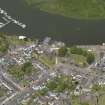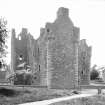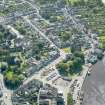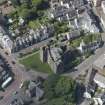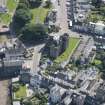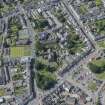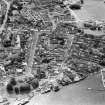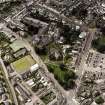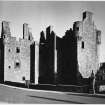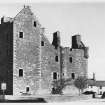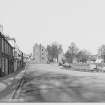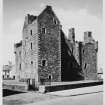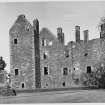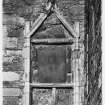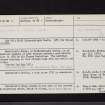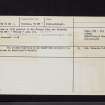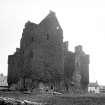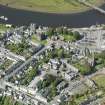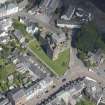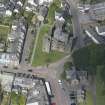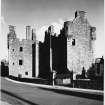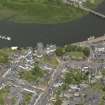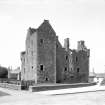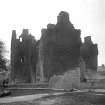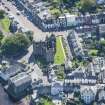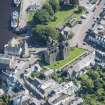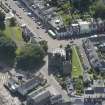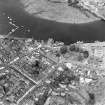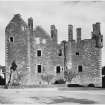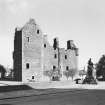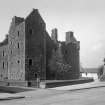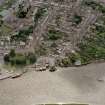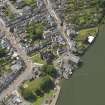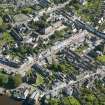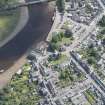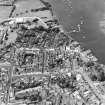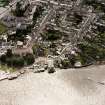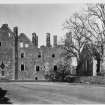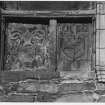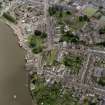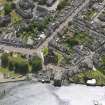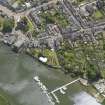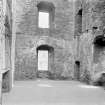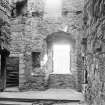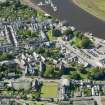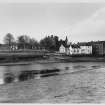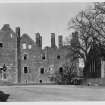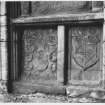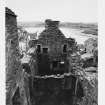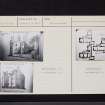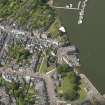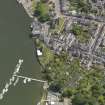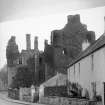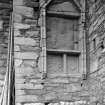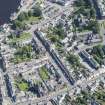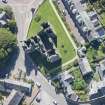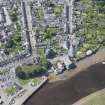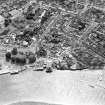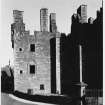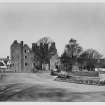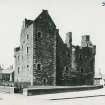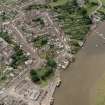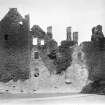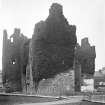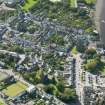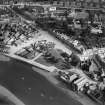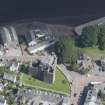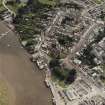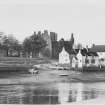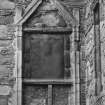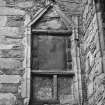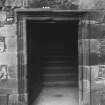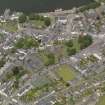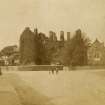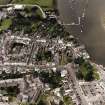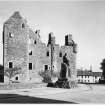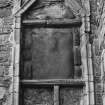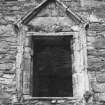Kirkcudbright, Castle Street, Maclellan's Castle
Fortified House (16th Century)
Site Name Kirkcudbright, Castle Street, Maclellan's Castle
Classification Fortified House (16th Century)
Alternative Name(s) Mclellan's Castle; Maclellan's House; Maclellan's Castle; Kirkcudbright Castle; Kirkcudbright Harbour, Castle
Canmore ID 64065
Site Number NX65SE 28
NGR NX 68237 51068
Datum OSGB36 - NGR
Permalink http://canmore.org.uk/site/64065
- Council Dumfries And Galloway
- Parish Kirkcudbright
- Former Region Dumfries And Galloway
- Former District Stewartry
- Former County Kirkcudbrightshire
NX65SE 28 68237 51068.
(NX 6823 5106) Kirkcudbright Castle (NR)
(In Ruins) AD 1582.
OS 25" map (1893-4)
Maclellan's House, or Kirkcudbright Castle, is an excellent example of 16th century domestic architecture built in 1582 by Sir Thomas Maclellan. The modified L-shape building is four storeys high with two additional attics.
RCAHMS 1914, visited 1911
Maclellan's Castle, a ruin since 1752 is scheduled.
V G Childe and W D Simpson 1954
Maclellan's House stands on the site of the convent of Greyfriars which, being in ruins, was in 1569 granted to Sir Thomas (but see NX65SE 41 - Friary - site of).
D MacGibbon and T Ross 1887
The ruined building is as described above; it is known as Maclellan's Castle.
Visited by OS (EGC) 8 February 1965
NX65SE 28 68237 51068
EXTERNAL REFERENCE:
Edinburgh Public Library.
James Grant's Sketch Books in M.S.S. Nos 320 and 321 - 6 drawings
Scottish National Portrait Gallery.
Country Life, Aug 1st, 1947, p22, photograph and article
Publication Account (1978)
MacLellan's Castle is not a castle at all, but is a late sixteenth century fortified townhouse located at the junction of St. Cuthbert Street and Castle Street. Now ruinous, the structure was built in 1581-2 by Sir Thomas MacLellan of Bombie. Constructed in a castellated style 'to express the status and importance of its occupants', the building was erected on a variation of the L-plan with angle turrets, wide-splayed gunloops and a total of four storeys (MacLeod, 1973, 22).
Information from ‘Historic Kirkcudbright: The Archaeological Implications of Development’ (1978).
Publication Account (1986)
The sight of this substantial tower-house near the centre of Kirkcudbright often elicits surprise, mainly because It makes absolutely no concessions to the demands of an urban environment, but it is this very quality that provides the key to our understanding of this buliding and the self-esteem of its builder, Sir Thomas MacLellan of Bombie. At the time of the house's completion in about 1582, Thomas was provost of Kirkcudbright, held much property in the town and county, and was shortly to marry, as his second wife, Dame Grissel Maxwell, daughter of the powerful Lord Herries. This house is nothing less than the mark of a wealthy and ambitious burgess-laird, and his monument (1597) inside the nearby Greyfriars Church is of an equally grand and elaborate style. His son, Robert, became 1st Lord Kirkcudbright in 1633, but the family's enthusiasm for the Royalist cause and military adventures, particularly in Ireland, were to cost them dear. During the minority of 4th Lord Kirkcudbright between 1664 and 1669 the estates were seized by the family's creditors, and there was virtually nothing left to support the title.
The rise and fall of the House of MacLellan is reflected in the house itself which may not have seen further use beyond the end of the 17th century. Indeed, there are traditions that Some of the upper-floor rooms had always been in an unfurnished state, but in any case by 1752 the roof and internal fittings were stripped out. Despite its gun-ports, angle-turrets, and a forbidding general mien, this building was essentially a domestic, not a defensive, security-conscious pile. Large windows, plenty of stairs (including a straight-flighted main stair), dry closets in place of open latrines, more than fifteen heated rooms, a well laid-out service basement with a kitchen in the wing and vaulted stores in the main block-these are the points that a late 16th century estate agent would have spotted immediately. But, for all its complex novelty and sophistication, the design follows traditional medieval lines in being centred around a first-floor hall with its adjacent chamber.
It is worth emphasising two of the more significant details. Above the door in the re-entrant angle there is a framed and pedimented set of three panels which contain relief carvings of what was probably the royal arms above those of Sir Thomas MacLellan and of Lord Herries, the latter bearing the initials G(rissel) M(axwell) and the date 1582. Within the great hall, and commensurate with the scale of the whole establishment, is an imposing fireplace which Sir Thomas's banqueting guests could not have failed to notice. He could have noticed them, too, even if he was not present, for cut into the back of the fireplace is a neat spy-hole or 'laird's lug', through which, as one account puts it, 'observation could be maintained on the occupants of the hall'.
Information from ‘Exploring Scotland’s Heritage: Dumfries and Galloway’, (1986).
Collections Managment (July 2018 - August 2018)
NX 68237 51068 This relatively small collection was catalogued in July – August 2018. It is stored in two ground floor cellars, and includes some large stair-treads and newels from a nook stair, several jambs, and some fragments of string-course.
At least two of the jambs, MCL/j/5-6, have small-scale mouldings, and probably came from a fireplace surround, such as those seen in the upper rooms of the castle. Two string-course fragments have parallels in situ, and can be seen at the upper levels of the castle's outer walls.
This and other inventories of carved stones from Historic Environment Scotland’s properties in care are held by the Collections Unit. For further information please contact collections@hes.scot
Mary Márkus – Archetype
(Source: DES Vol 19)
Watching Brief (1 October 2019 - 31 October 2019)
NX 68242 51062 A watching brief was undertaken during the excavation of a small area to carry out repair work to an existing drain system adjacent to the Ticket Office, situated to the S of Maclellan’s Castle (Canmore ID: 64065). The work took place in October 2019. Two modern pipes were located, and no archaeological features or deposits were identified.
Archive: NRHE (intended). Reports lodged with Council HER
Funder: Historic Environment Scotland
Stuart Mitchell − CFA Archaeology Ltd
(Source: DES Vol 21)
OASIS ID: cfaarcha1-380696 (S Mitchell) 2019
Watching Brief (31 March 2021 - 1 April 2021)
NX 68242 51062 An archaeological watching brief was undertaken, 31 March to 1 April 2021, during the excavation of a small test-pit to identify the location of a drain in need of repair at Maclellan’s Castle, Kirkcudbright. A single trench was excavated to a depth of 1.4m with no evidence of the service. No archaeologically significant deposits or features were impacted on. Archive: NRHE (intended)
Funder: Historic Environment Scotland
Harry Francis – CFA Archaeology Ltd
(Source: DES Vol 22)










































































































